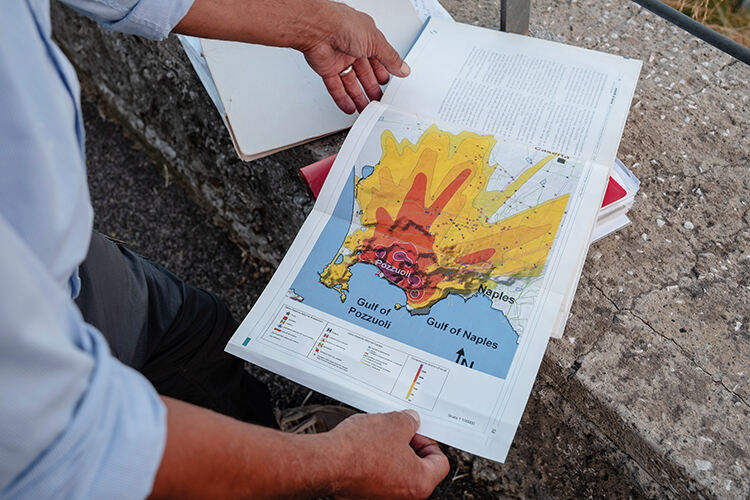
Magma and volcanic gases are increasingly active at Campi Flegrei where hundreds of thousands would be at risk from an eruption
By , Photographs by Manuel Doratti
Just outside Naples, located within the danger zone of one of the world’s most dangerous volcanoes, a cluster of Italian towns is on yellow alert. Last summer, the frequency of the small, persistent earthquakes that have become a familiar presence for residents since the 1980s began to intensify. By September, scientists at the nearby volcano observatory were recording more than 1,000 tremors a month and, on 27 September, the coastal town of Pozzuoli was rattled by a 4.2 magnitude earthquake – the region’s strongest in 40 years.
For the past decade, the ground beneath Pozzuoli has been rising at rates of up to 10 centimetres a year. Three kilometres beneath the surface, an accumulation of volcanic gases is stretching the Earth’s crust upwards, causing it to deform and crack (the source of the earthquakes). This area of uplift is just one part of a sprawling, 14-kilometre volcanic caldera called Campi Flegrei – the ‘burning fields’.
Campi Flegrei, known in English as the Phlegraean Fields, is five kilometres west of the imposing but slumbering Mount Vesuvius. Although not directly linked, both are products of Italy’s location on the boudary of two converging tectonic plates. Unlike its close neighbour, however, Campi Flegrei has an unassuming appearance from the surface. A third of it lies below water, under the Gulf of Naples. Much of the rest is densely populated. Yet Campi Flegrei is an active caldera – Europe’s largest – comprising 24 craters, as well as numerous gassy fumaroles, bubbling lakes and boiling pools of mud. If it were to erupt, roughly half a million people would need to be evacuated.
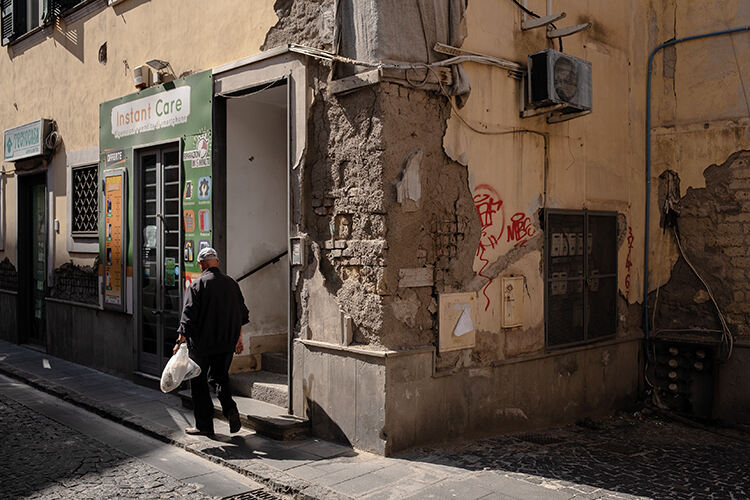
When Italy’s Minister of Civil Protection Nello Musumeci met with local government officials last November, however, his advice – to prepare for the possible need to move to an orange-level alert quickly – was met with resistance. ‘People worry when you start talking about volcanic risk,’ says Giuseppe Mastrolorenzo, a volcanologist and senior researcher at Italy’s National Institute of Geophysics and Volcanology (INGV) Vesuvius Observatory. ‘They worry that all the tourists will leave and that house prices will collapse.’
Residents in Campi Flegrei’s highest risk area (the ‘red zone’), which includes the towns of Pozzuoli, Bacoli, Monte di Procida and Quarto, are used to the activity of the restless volcano. The ground around the centre of the caldera has been in continual uplift since 2005 due to a phenomenon called bradyseism, where the movement of molten rock, magma and gases causes the surface of the Earth to rise and subside.
Over the past 70 years, as parts of the town have risen by as much as four metres, water levels in the bay have dropped drastically, threatening the future of Pozzuoli’s port. Similar peaks of seismic activity have occurred as recently as the 1950s, 70s and in 1984, when rapid uplift prompted the evacuation of 40,000 people from downtown Pozzuoli. The ground deformation has caused damage to building facades and cracks in the roads. As a result of earlier periods of subsidence, parts of the ancient Roman spa town Baiae on the outskirts of Bacoli are now submerged ten metres below sea level.
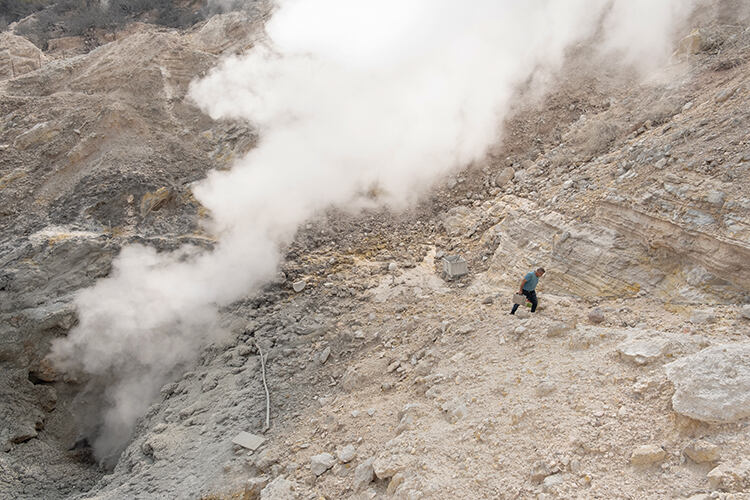
Campi Flegrei – Europe’s largest active caldera
When the Campi Flegrei caldera first formed, nearly 40,000 years ago, the eruption produced 200 cubic kilometres of magma.
The last time Campi Flegrei erupted was in 1538. Over eight days it deposited enough material to create a new hill.
Seismic activity in 1984 led to 40,000 people being evacuated from downtown Pozuolli, but no eruption occured.
The Italian Civil Protection Department puts the probability of a small to average-sized eruption at 95 per cent.
In June last year, a paper published by researchers at the Vesuvius Observatory and University College London concluded that all this movement has stretched parts of the ground to breaking point. The constant stress is changing the very structure of the crust, which has become less elastic over time, accelerating the frequency of the earthquakes. ‘Our results show that parts of the volcano are becoming weaker,’ says Nicola Alessandro Pino, one of the authors. ‘This means that it might break, even though the stresses pulling it apart are smaller than they were during the last crisis 40 years ago.’
Mauro Antonio Di Vito, director of the INGV Vesuvius Observatory, explains that while every earthquake is a crack in the crust, for an eruption to happen it requires another fundamental element – magma – to be present. That magma is located in a chamber eight kilometres below ground. Nonetheless, researchers at the observatory are monitoring the situation on behalf of local town officials and members of Italy’s Civil Protection Department and High Risk Commission, who are responsible for Campi Flegrei’s existing emergency evacuation plan.
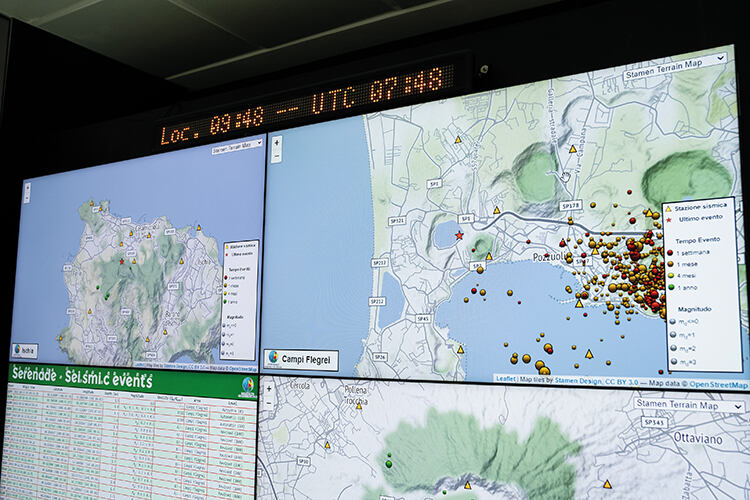
Currently, if an eruption were to occur, the total estimated time needed to evacuate all 500,000 people in Campi Flegrei’s red zone is 72 hours. For these residents, authorities have determined that evacuation is the only protective measure due to the high risk of pyroclastic flows – avalanches of hot gas, ash and volcanic fragments that can reach high speeds and travel for several kilometres. Over the course of three days, buses, trains and boats will be deployed to move everybody out. Twinned towns will host residents with nowhere else to go. Beyond the boundary of the red zone, the yellow zone – home to more than 800,000 people – will be exposed to significant fallout of volcanic ash; the most vulnerable residents may also require temporary evacuation.
When asked whether the current evacuation plans would be sufficient to manage a possible volcanic emergency, INGV researcher Mastrolorenzo replies emphatically: ‘No, absolutely not.’ Instead, he believes that a strange compromise has been reached between what the science suggests could happen during an eruption of Campi Flegrei and a desire to reassure the public. ‘Even my colleagues, in some cases, have a tendency to show a positive front – but without any scientific basis for it,’ he says.
More than a decade ago, Mastrolorenzo and his colleague Lucia Pappalardo, also a senior researcher at the observatory, published a paper analysing the volcanic risks of Campi Flegrei based on past eruptions during the volcano’s 40,000-year history. Looking at rocks that had been ejected during eruptions, the researchers noted the presence of small crystals less than 100 microns in length (one micron is equivalent to one one-thousandth of a millimetre), indicative of magma that has cooled rapidly (larger crystals need longer to form).
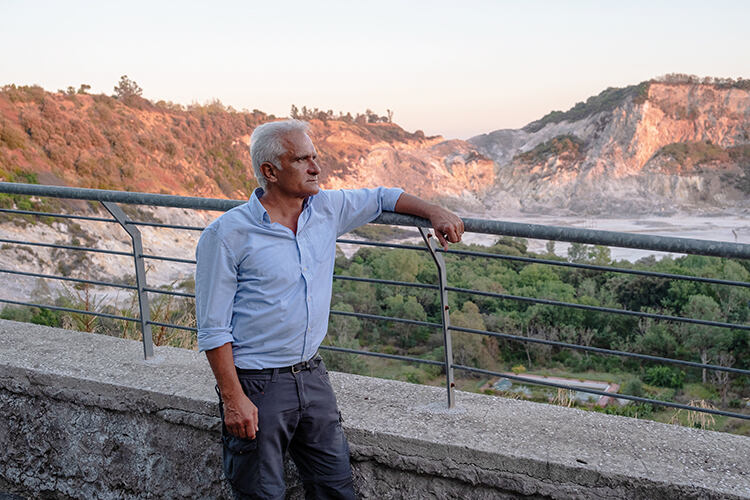
They also found evidence that, in the lead-up to past eruptions, the magma in the chambers below the caldera was already in an explosive state and needed little to push it to the point of eruption. On the occasions when Campi Flegrei did erupt, it’s likely that it happened very quickly and with very little forewarning.
Mastrolorenzo says that this is typical of calderas. ‘The behaviour of a caldera is completely different from that of other volcanoes such as Etna or Iceland’s Fagradalsfjall volcano, where you can follow the evolution of the magma within the crust.’ He points to Rabaul caldera in Papua New Guinea, which violently erupted in 1994 after 51 years of rest and less than a day of intense seismic activity. ‘The very basis of the present emergency plan is wrong,’ he insists. ‘It works on the assumption that we will have the capacity to forecast a coming eruption well before it happens. But this is just a hypothesis. We don’t have a contract with the volcano. In geology, we consider the past as a way to envisage the future, so we must base our models on volcanic behaviour that has occurred in the past.’
Unless the emergency plans are revised, Mastrolorenzo believes that one of two scenarios is likely to occur: renewed seismic activity triggers a false alarm, where everyone is evacuated but no eruption occurs, or authorities miss the opportunity to evacuate. ‘We need a strategy that works for all eventualities,’ he says. ‘We must be ready to evacuate at any time, even if the eruption has started.’ It might be tough to convince locals who are worried about the economic impact of being labelled a dangerous volcanic site.
In 2021, a study of the United States Geological Survey’s alert system for three of the country’s most dangerous volcanoes – Washington State’s Mount St Helens, Hawaii’s Kīlauea, and California’s Long Valley Caldera – found that when an alert was elevated at any level above ‘normal’ due to a period of volcanic unrest, it had an adverse effect on local economies and put a dent in house prices. The authors say the results reveal a flaw in disaster risk reduction practices, and suggest that governments account for these periods of unrest, and not just eruptions, when it comes to disaster relief funding. If that were to happen, perhaps the residents of Pozzuoli and its neighbouring towns would be more receptive to a more prudent evacuation plan.
The last time Campi Flegrei erupted was in 1538. The eight-day event deposited enough material to create a new hill, known as Monte Nuovo (‘new mountain’), which fills the horizon to the north of Pozzuoli’s port. If the volcano were to reawaken, it’s believed that the eruption would be a small one; the Italian Civil Protection Department puts the probability of a small to average-sized eruption at 95 per cent.
But a big one isn’t beyond the bounds of possibility. When the Campi Flegrei caldera first formed, nearly 40,000 years ago, the eruption produced 200 cubic kilometres of magma – enough to fill 80 million Olympic swimming pools. Given the area’s high urbanisation, even an eruption the size of the last would be enough to cause hundreds of thousands of deaths if no evacuation were to take place.
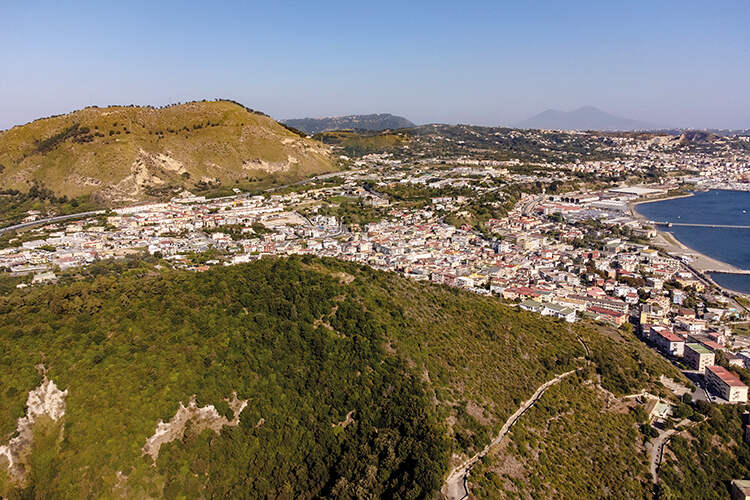
Mastrolorenzo has mapped out all the possible eruption scenarios at Campi Flegrei. Considering the present level of uncertainty in forecasting any future eruption’s type and size, as well as the location of any vents within the caldera, he suggests that authorities plan for an eruption rated as five or more on the Volcanic Explosivity Index (VEI). The 1980 eruption of Mount St. Helens, often described as the most disastrous volcanic eruption in modern US history, was a VEI 5 eruption. An event of this magnitude would potentially expose up to three million people to volcanic hazards. ‘Measuring from the centre of the caldera, we must include everyone living within a 20-kilometre radius of the volcano in any contingency plans.’
By November last year, the intensity and frequency of earthquakes in Pozzuoli had begun to subside, and ground deformation had reduced by more than half. Di Vito hopes this means activity will continue to decrease, further reducing the chances of an eruption (although this would be ‘impossible to forecast’, he adds).
Mastrolorenzo isn’t so sure, insisting that we don’t fully understand the relationship between bradyseism and eruptions, so we shouldn’t draw conclusions. Some of the confusion surrounding risks of Campi Flegrei, he adds, comes from the fact that, even when presented with the same data, scientists can reach starkly contrasting conclusions. The result is a lot of different hypotheses. ‘It’s dangerous to base the safety of hundreds of thousands of people solely on a single hypothesis,’ he says.




